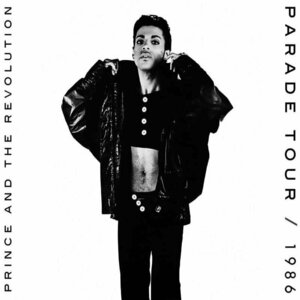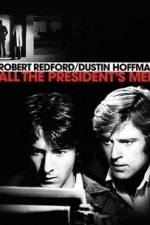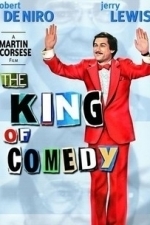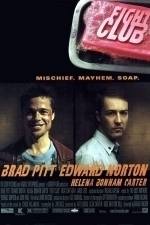Britt Daniel recommended Parade by Prince and The Revolution in Music (curated)
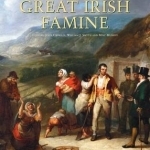
Atlas of the Great Irish Famine
John Crowley, William J. Smyth and Mike Murphy
Book
The Great Famine is possibly the most pivotal event/experience in modern Irish history. Its global...
Henry Rollins recommended All the President's Men (1976) in Movies (curated)

Island Plane Flight Simulator
Games
App
Island Plane Flight Simulator real action flying airplane pilot game. Finally your wait is over so...

Colorimetry PRO
Lifestyle and Education
App
Colorimetry PRO is the first assistant to image consultants and professionals related to the world...
Emma @ The Movies (1786 KP) rated The King of Comedy (1983) in Movies
Jun 2, 2020
Rupert Pupkin dreams of a life as a stand-up comic. Almost every night he's outside the local studio to see his idol Jerry Langford to try and get the big break that will launch his career. Rupert's obsession for success starts to completely run his life and with his newfound "friendship" with Jerry he becomes even more unstable and crosses a line there's no coming back from.
Before I comment on anything specific I want to point out that the rating of the film isn't really anything to do with its quality, it's more to do with me. I absolutely hate awkward comedy and awkwardness in general on screen, it makes me uncomfortable and I would much rather just leave that awkward feeling to my everyday life than have it in my downtime too.
The story idea is a solid one (if it hadn't been then I'm sure Joke would have done more original thinking) and the idea of obsessive fan culture is something I think all generations can get along with. Because of that fact I can see it appealing to a variety of people if they can get past the dated feel to it.
Robert De Niro did a great job as Pupkin, and even in the short clip above you can see that in his behaviour changes to his environment. The dynamic with each individual character changes from confidence to anxious and irritated and you get a sense of what's going on in his head. His performance escalates nicely and when you combine his actions with those of Masha (Sandra Bernhard) you get quite an impact at the end.
I get the feeling it might be a little... bland... for modern audiences at times. That might not be quite the right way to describe it. It plods along at a good pace but there isn't any deviation from its focus on Pupkin and if that doesn't click with you then it might not be something that can keep you interested.
If this hadn't come up in my Twitter polls of films to watch then I probably wouldn't have reviewed it. It's a good film, with solid acting and everything is a perfect snapshot of its era, but it just isn't for me. If I'd watched it years ago and certainly if I'd watched it before Joker came out then I might have been able to engage more with it. I can see why so many people love it but it just isn't for me.
Originally posted on: https://emmaatthemovies.blogspot.com/2020/06/the-king-of-comedy-movie-review.html
BankofMarquis (1832 KP) rated Fight Club (1999) in Movies
May 7, 2020
The second rule of this review is that I CANNOT TALK ABOUT THIS MOVIE!
So...I'm going to talk about this movie.
David Fincher's 1999 mind-tripping epic about 2 friends who join forces to create chaos is not the movie that you think it is. Not even if you've seen it.
Directed by one of the my favorite Directors of all time, FIGHT CLUB tells the story of Edward Norton's character (who's name is never mentioned in the film) who is suffering from insomnia and an all around lack of enthusiasm for life - that is until he runs into 2 people that will profoundly change his life - Marla Singer (Helena Bonham Carter) and, especially, Tyler Durden (Brad Pitt).
This film was poorly marketed by the studio at the time of it's release - focusing on the "FIGHT CLUB" aspect of this film - and if that is turning you away from this film, then you are missing out, for the "Fight Club" aspect is only one sliver of what this film is about. This film is an incredibly funny parody of society and "fitting in" with over-the-top scenarios and characters masquerading as people and events in "the real world".
David Fincher is perfectly suited for this work. He handled the pacing, style and subject matter with aplomb balancing seriousness and absurdity perfectly to create a subtle parody. It is a masterwork in that you don't notice his Direction - always a mark of a good Director.
Edward Norton, of course, is wonderfully cynical as the Narrator. When this film came out, I went to see it because of him - he was (is?) an actor that (more often than not) picks quality material and delivers a quality performance. Brad Pitt, of course, has the "showier" role and he nails it. This film marked the "coming out" of Pitt as an actor for me - and he hasn't stopped (right up until his deserved Oscar this year for ONCE UPON A TIME...IN HOLLYWOOD). But, it is the performance of Helena Bonham Carter that caught my eye on this re-watch. Fight Club is one of those films that becomes a different film upon a 2nd (and 3rd and 4th and 5th...) watch - mostly because of the change in perspective of the Marla character. I've now seen this film multiple times and in this viewing it was Marla's journey that captured my attention. It is a terrific performance that is an optical illusion.
This film is not for everyone - so be warned - but if you give it a shot, I think you'll find a richly rewarding - and subversively funny - movie going experience.
Letter Grade: A
9 stars (out of 10) and you can take that to the Bank(ofMarquis)

I-Doser Premium
Entertainment and Music
App
I-Doser is the world's top binaural brainwave, lucid dream, mediation, yoga, chakra, kundalini and...

Texture Canada
News and Entertainment
App
Texture is the only app that gives you unlimited access to over 200 top magazines. Enjoy full issues...

You Can't Spell America Without Me: The Really Tremendous Inside Story of My Fantastic First Year as President
Kurt Andersen and Alec Baldwin
Book
Political satire as deeper truth: Donald Trump’s presidential memoir, as recorded by two...
politics comedy
